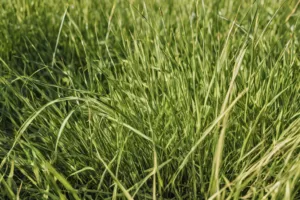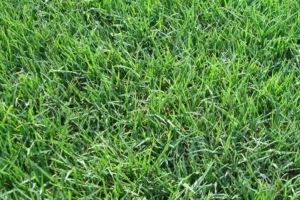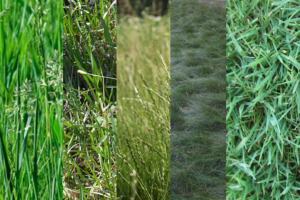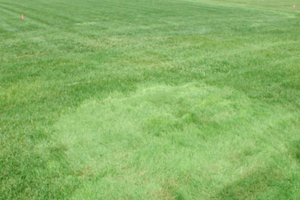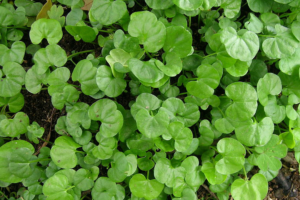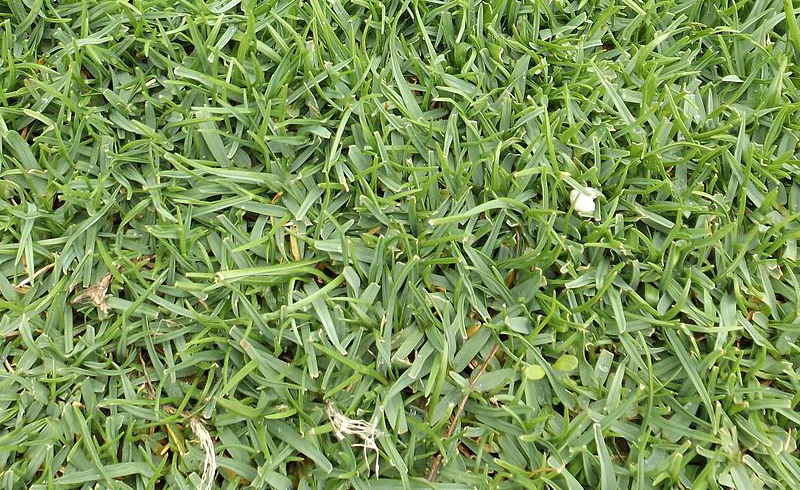
Brief Overview of Bentgrass
Bentgrass is a turfgrass commonly used in golf courses and lawns due to its delicate texture and high density. It belongs to the Agrostis genus, which comprises over 100 species, and is known for tolerating low mowing, making it an ideal choice for creating smooth and uniform golf greens. Bentgrass is also appreciated for its bright green color and ability to spread and cover ground quickly, making it a popular choice for lawns and other landscaping needs.
However, Bentgrass is not just about aesthetics. Its deep root system helps prevent soil erosion, and its dense growth can suppress the growth of weeds. Moreover, certain types of Bentgrass are also used in pasture lands for grazing, as they are a good source of nutrition for livestock. Despite its many benefits, Bentgrass requires careful maintenance, particularly in watering and disease control, to keep it looking its best.
Importance and Relevance of Bentgrass in Various Fields
Bentgrass is considered the gold standard for creating the perfect playing surface in golf. Its ability to withstand low mowing heights creates smooth, fast greens that professional golfers prefer. Golf courses in cooler climates favor Bentgrass due to its excellent cold tolerance. The presence of Bentgrass can significantly enhance the prestige and reputation of a golf course, making it a critical factor in the golfing industry.
Beyond golf courses, Bentgrass is also a popular choice for residential and commercial lawns. Its dense growth and bright green color can significantly enhance the aesthetic appeal of a landscape. Furthermore, Bentgrass is also used in erosion control due to its deep root system and rapid spreading habit. Certain types of Bentgrass are used as pasture grass in agriculture due to their nutritional value for livestock. Therefore, Bentgrass plays a significant role in various fields, from sports and landscaping to agriculture and environmental conservation.
History and Origin of Bentgrass
Bentgrass, known scientifically as Agrostis, is a genus that includes over 100 species of grasses. The history of these grasses is as diverse as the species themselves. They are believed to have originated in Eurasia, with some species native to parts of North Africa and North America. The use of Bentgrass as a turfgrass dates back centuries, with historical records indicating its use in lawn and landscape applications in Europe as early as the Middle Ages.
The spread of Bentgrass around the world is primarily attributed to human activity. As people migrated and established new settlements, they brought various plant species, including Bentgrass. This grass was valued for its ability to quickly cover bare ground, prevent soil erosion, and provide a pleasing green landscape. Over time, Bentgrass found its way to nearly every corner of the globe, adapting to various climates and conditions.
Regions Where Bentgrass is Native
Bentgrass is native to many parts of the world, but it is most commonly found in the temperate and cool regions of the Northern Hemisphere. This includes large parts of Europe, North America, and Asia. Bentgrass thrives in these regions’ cool, moist climates, providing the ideal conditions for its growth.
In North America, Bentgrass is native to the northern regions, including Canada and the northern United States. It is also found in the higher elevations of the western United States, where the cooler temperatures mimic those of its native regions. In Europe, Bentgrass is widespread and can be found from the Mediterranean region in the south to the Scandinavian countries in the north. In Asia, Bentgrass is native to the temperate regions, including parts of China, Japan, and Korea. Despite its widespread distribution, Bentgrass is not considered invasive in most areas, as it typically does not outcompete native plant species.
Growth and Cultivation of Bentgrass
Bentgrass is a cool-season grass that thrives in temperate climates. It prefers full sun but can tolerate some shade. The ideal soil for Bentgrass is well-draining and slightly acidic, with a pH between 5.5 and 6.5. Bentgrass seeds can be sown in the spring or fall, with fall being the preferred time in many regions due to the cooler temperatures and increased rainfall.
The growth rate of Bentgrass can vary depending on the specific species and growing conditions. However, most types of Bentgrass are known for their rapid growth and ability to spread quickly. This is one of the reasons why Bentgrass is often used for lawns and golf courses, as it can quickly cover bare ground and create a dense, lush carpet of grass.
Step-by-Step Guide to Planting and Cultivating Bentgrass
Planting Bentgrass starts with preparing the soil. This involves removing existing vegetation, tilling the soil to a depth of about 6 inches, and adding any necessary soil amendments to adjust the pH and improve the soil structure. Once the soil is prepared, the Bentgrass seeds can be sown evenly across the surface. It’s essential to keep the soil moist until the seeds germinate, which usually takes about two weeks.
After the Bentgrass has been established, it requires regular maintenance to keep it looking its best. This includes regular mowing to maintain the desired height, watering during dry periods, and applying a balanced fertilizer to promote healthy growth. Monitoring for any signs of pests or diseases is essential, as Bentgrass can be susceptible to various lawn problems.
Common Challenges and Solutions in Bentgrass Cultivation
One of the main challenges with growing Bentgrass is its susceptibility to various pests and diseases. These can include fungal diseases like dollar spots and brown patches and pests like billbugs and white grubs. Regular monitoring and early intervention are crucial to managing these problems. This can involve applying fungicides or pesticides as needed or using integrated pest management strategies to reduce the use of chemicals.
Another challenge with Bentgrass is its high maintenance requirements. Bentgrass needs regular mowing to maintain its appearance and health, and it can require more watering and fertilization than some other types of grass. However, with proper care and attention, Bentgrass can create a beautiful, high-quality lawn or golf course that is well worth the effort.
Bentgrass in Golf Courses
Bentgrass has long been a favorite for golf courses, particularly for the greens. Its fine texture and ability to tolerate shallow mowing heights make it ideal for creating the smooth, fast surfaces that golfers prefer. Bentgrass’s bright green color adds to a golf course’s aesthetic appeal, creating a visually pleasing contrast with the sand traps and fairways.
However, using Bentgrass on golf courses has its challenges. Bentgrass greens require careful maintenance to keep them in top condition. This includes regular mowing, watering, fertilization, and monitoring for pests and diseases. Despite these challenges, many golf course superintendents consider Bentgrass the best choice for creating high-quality greens.
Maintenance of Bentgrass in Golf Courses
Maintaining Bentgrass on a golf course requires a careful balance of mowing, watering, and fertilization. Bentgrass greens are typically mowed daily during the growing season to maintain the desired height and speed. The watering frequency can depend on the weather conditions, but the goal is to keep the soil moist without overwatering, which can lead to disease problems.
Fertilization is another crucial aspect of Bentgrass maintenance on golf courses. A balanced fertilizer that provides the necessary nutrients for Bentgrass growth is typically applied regularly throughout the growing season. In addition to these regular maintenance tasks, golf course superintendents must monitor for pests and diseases and act as needed to keep the greens healthy and attractive.
Case Studies of Famous Golf Courses Using Bentgrass
Many of the world’s most famous golf courses use Bentgrass for their greens. For example, Augusta National Golf Club, home of the Masters Tournament, is known for its pristine Bentgrass greens. The club goes to great lengths to maintain the health and appearance of the greens, including using subsurface air systems to control soil temperature and moisture levels.
Another notable example is the Old Course at St. Andrews in Scotland, often called the “home of golf.” Despite the challenging coastal climate, the greenskeepers at St. Andrews have successfully maintained Bentgrass greens that are admired and respected by golfers worldwide. These case studies demonstrate the potential of Bentgrass to create high-quality golf greens when adequately maintained.
Bentgrass as a Lawn Grass
Bentgrass is a popular choice for residential lawns due to its delicate texture and bright green color. Its ability to spread quickly and form a dense grass carpet makes it an attractive option for homeowners looking to establish a new lawn quickly. Bentgrass is also a good choice for lawns that will be used for recreational activities, as it can withstand a fair amount of foot traffic.
However, Bentgrass is not the most accessible grass to maintain as a lawn. It requires regular mowing to keep it at the optimal height, and it can be susceptible to various pests and diseases. Bentgrass also prefers cooler temperatures and may struggle in the heat of summer, particularly in warmer climates. Despite these challenges, many homeowners appreciate the beauty of a Bentgrass lawn and are willing to put in the necessary effort to maintain it.
Maintenance Tips for Bentgrass Lawns
Maintaining a Bentgrass lawn requires a regular mowing, watering, and fertilization schedule. Bentgrass should be mowed regularly to maintain a height of about 1 to 2 inches. During hot weather or drought, raising the mowing height slightly may be beneficial to reduce stress on the grass.
Watering is another essential aspect of Bentgrass lawn care. Bentgrass prefers moist soil, but avoiding overwatering is essential, which can lead to disease problems. A slow, deep watering is usually more beneficial than frequent light watering. Fertilization should be done with balanced lawn fertilizer, following the manufacturer’s instructions for application rates and timing.
Comparison with Other Popular Lawn Grasses
Compared to other popular lawn grasses, Bentgrass has both advantages and disadvantages. Its fine texture and bright green color make it one of the most attractive lawn grasses. However, it also has higher maintenance requirements than many other types of grass. For example, Kentucky bluegrass and Tall fescue are more drought-tolerant than Bentgrass and can withstand higher mowing heights.
Regarding disease resistance, Bentgrass can be more susceptible to certain diseases than other grasses. However, with proper care and attention to watering and fertilization, many of these disease problems can be prevented. Ultimately, the choice between Bentgrass and other lawn grasses will depend on the site’s specific conditions and the homeowner’s preferences.
Pests and Diseases Affecting Bentgrass
Bentgrass, while a popular choice for lawns and golf courses, is susceptible to various pests and diseases. Common pests include insects like billbugs and white grubs, which can cause significant damage to the grass by feeding on the roots. Other pests like nematodes can also affect Bentgrass, leading to thin, weak lawn or golf course areas.
Diseases are another significant concern for Bentgrass. Fungal diseases, such as dollar spots, brown patches, and snow mold, can cause significant damage to Bentgrass. These diseases often present as discolored patches in the lawn or golf course and can spread rapidly under the right conditions. Proper identification of these diseases is crucial for effective treatment and control.
Prevention and Treatment Methods
Preventing pests and diseases in Bentgrass involves a combination of sound cultural practices and targeted treatments. Maintaining the proper mowing height, watering correctly, and applying the right amount of fertilizer can all help keep Bentgrass healthy and less susceptible to pests and diseases. Regular lawn or golf course monitoring can also help detect problems early before they become too severe.
When pests or diseases do occur, there are a variety of treatment options available. For insect pests, there are both chemical and biological control options available. Chemical controls include insecticides, while biological controls can include beneficial insects or nematodes that prey on pests. For diseases, fungicides are often used. However, it’s essential to correctly identify the disease before applying treatments, as different diseases can require different fungicides.
Impact of Pests and Diseases on Bentgrass Quality
Pests and diseases can have a significant impact on the quality of Bentgrass. Damage from pests or diseases can lead to thin, weak lawn or golf course areas, reducing the aesthetic appeal. In severe cases, pests or diseases can cause significant damage that requires reseeding or resodding the affected areas.
In addition to the direct damage, pests, and diseases can also increase the maintenance requirements for Bentgrass. Dealing with pests and diseases often requires additional watering, mowing, or fertilization, as well as the application of pesticides or fungicides. This can increase the cost and labor of maintaining a Bentgrass lawn or golf course. Despite these challenges, it’s possible to maintain a high-quality Bentgrass lawn or golf course with proper care and attention.
Environmental Impact of Bentgrass
Bentgrass, like other turfgrasses, plays a role in the local ecosystem. Its dense growth and deep root system can help prevent soil erosion, beneficial in areas prone to heavy rains or runoff. Additionally, the root system of Bentgrass can help improve soil structure over time, promoting better water infiltration and reducing surface runoff.
However, Bentgrass can also have negative impacts on the environment. For example, it can outcompete native plant species, particularly in areas that are not native. This can lead to reduced biodiversity, which can have ripple effects throughout the ecosystem. Additionally, the maintenance of Bentgrass, particularly on golf courses or other manicured landscapes, can require significant inputs of water and chemicals, which can have environmental impacts.
Measures to Control Bentgrass Spread in Non-Native Areas
In areas where Bentgrass is not native, measures may be taken to control its spread. This can include physical methods, such as mowing or hand-pulling, and chemical methods, such as herbicides. It’s important to note that control measures should be carried out to minimize harm to non-target species and the surrounding environment.
In some cases, it may be more appropriate to replace Bentgrass with a native or more environmentally friendly alternative. This can provide the benefits of turfgrass, such as erosion control and aesthetic appeal, without the potential negative impacts associated with Bentgrass.
Research on Bentgrass’s Environmental Impact
While specific research on the environmental impact of Bentgrass is limited, there is a growing body of research on turfgrass in general. This research often focuses on the environmental impacts of turfgrass maintenance, such as water use and chemical inputs, and the potential for turfgrass to contribute to biodiversity and ecosystem services. This research can help guide best management practices for Bentgrass and other turfgrasses to minimize their environmental impact.
The information I’ve shared here is a general overview and may only apply to some situations or locations. For specific information on the environmental impact of Bentgrass in your area, consider consulting with a local extension service or environmental agency.
Future of Bentgrass
The future of Bentgrass in lawns, golf courses, and other landscapes is likely to be influenced by various factors. One of these is climate change. As temperatures rise and precipitation patterns change, the regions where Bentgrass can thrive may also change. This could lead to a shift in the types of grasses used in certain areas, with heat-tolerant species becoming more prevalent in some regions.
Another factor that could influence Bentgrass’s future is breeding and genetic advances. Scientists are continually working to develop new varieties of Bentgrass that are more resistant to pests and diseases, drought-tolerant, or have other desirable characteristics. These new varieties could expand the areas where Bentgrass can be used and reduce the maintenance required to keep it looking its best.
Trends in Bentgrass Usage
Regarding trends, there is a growing interest in sustainable landscaping practices, which could influence the use of Bentgrass. For example, some homeowners and golf course managers want to reduce their water use, which could lead to a shift towards more drought-tolerant grasses. However, with advances in breeding, new varieties of Bentgrass could be developed that require less water.
Another trend is the increasing recognition of the value of biodiversity in landscapes. This could lead to a move away from monocultures of a single grass species, like Bentgrass, towards more diverse mixes of grasses and other plants. This could have implications for the use of Bentgrass in both residential lawns and golf courses.
Innovations in Bentgrass Cultivation and Maintenance
Innovation is also likely to play a role in the future of Bentgrass. This could include new planting and maintenance methods, tools, and equipment for Bentgrass care. For example, advances in irrigation technology could make it easier to provide Bentgrass with the right amount of water, reducing waste and saving time and effort.
Pest and disease management innovations could include new biological control methods or more effective and environmentally friendly pesticides and fungicides. These could help to reduce the impact of pests and diseases on Bentgrass, improving its appearance and health.
Potential Future Applications of Bentgrass
Looking to the future, there may be new applications for Bentgrass that still need to be fully explored. For example, Bentgrass could be used in green roof systems, where its dense growth and ability to tolerate low mowing could be beneficial. Bentgrass could also have potential uses in habitat restoration projects due to its ability to quickly cover bare ground and prevent erosion.
As our understanding of Bentgrass and its potential uses grows, this versatile grass will continue to be a valuable resource in various settings. From lawns and golf courses to new and innovative applications, the future of Bentgrass looks bright.
Conclusion
As explored in this comprehensive guide, Bentgrass is a versatile and widely used grass species with a rich history and a promising future. From its origins in the cool, temperate regions of the Northern Hemisphere, Bentgrass has spread worldwide, finding a particularly prominent role in golf. Its fine texture, bright green color, and ability to tolerate low mowing make it the gold standard for golf greens, while its rapid growth and dense coverage make it a popular choice for lawns.
However, Bentgrass has its challenges. It requires careful maintenance to keep it looking its best and can be susceptible to various pests and diseases. Despite these challenges, with proper care and attention, Bentgrass can create a beautiful, high-quality lawn or golf course that is well worth the effort.
Recap of Key Points Discussed
We’ve covered a lot of ground in this guide, from the history and cultivation of Bentgrass to its use in golf courses and lawns, its susceptibility to pests and diseases, and its environmental impact. We’ve also looked at the future of Bentgrass, including current trends, innovations in cultivation and maintenance, and potential future applications.
One thing is evident in all these areas: Bentgrass is a valuable resource that plays a significant role in our landscapes. Whether you’re a golf course superintendent, a homeowner, or simply someone interested in grasses, understanding Bentgrass can help you make informed decisions about its use and care.
Encouragement for Further Exploration and Study of Bentgrass
While this guide provides a comprehensive overview of Bentgrass, there is always more to learn. The world of Bentgrass is continually evolving, with new research, innovations, and applications constantly emerging. Whether you’re interested in the science of Bentgrass, its practical applications, or its environmental impact, there are many opportunities for further exploration and study.
So, continue whether you’re a seasoned professional or a curious beginner. Keep learning, keep exploring, and keep discovering the fascinating world of Bentgrass. Who knows what you might find?
References and Further Reading
A. Books and Scholarly Articles on Bentgrass
- “Turfgrass Biology, Genetics, and Breeding” by Michael D. Casler and Ronny R. Duncan: This book provides a comprehensive overview of turfgrass science, including Bentgrass. It covers everything from the basics of turfgrass biology and genetics to the latest research on breeding and management.
- “Managing Bentgrass Golf Greens” by Karl Danneberger: This book is a practical guide for anyone who maintains Bentgrass golf greens. It covers all aspects of Bentgrass management, from establishment and mowing to irrigation and pest control.
B. Online Resources
- The United States Golf Association (USGA) Green Section: The USGA Green Section provides a wealth of information on golf course management, including articles and resources on Bentgrass care and maintenance.
- The Lawn Institute: The Lawn Institute offers resources on all aspects of lawn care, including selecting and maintaining different grass species like Bentgrass.
C. Extension Services
- University of California Statewide Integrated Pest Management Program: This website provides detailed information on the pests and diseases that can affect Bentgrass and other turfgrasses, along with recommendations for management and control.
- University of Arkansas Division of Agriculture Research & Extension: This extension service offers a variety of resources on turfgrass management, including specific information on Bentgrass.
D. Encouragement for Continued Learning
The world of Bentgrass is vast and continually evolving. Whether you’re a golf course superintendent, a homeowner, or simply someone interested in grasses, there are many opportunities for further learning and exploration. Don’t stop with this guide – continue seeking new information, asking questions, and deepening your understanding of this fascinating grass species.

Bob Green, a passionate lawn care enthusiast with over two decades of landscaping experience, is this website’s proud owner. His vast knowledge of horticulture and dedication to helping homeowners maintain beautiful lawns are reflected in the valuable content he shares on his platform. John has always been interested in Agrostology.









